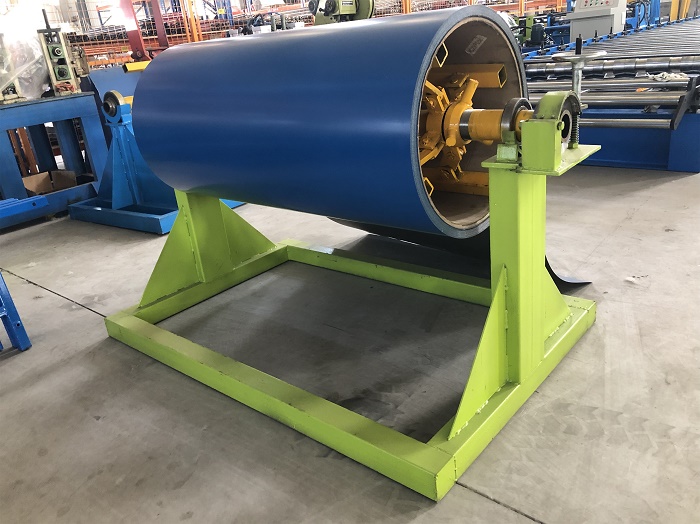T-Shape Keel Roll Forming Equipment for Efficient Production and Structural Strength
The T-Shape Keel Roll Forming Machine Revolutionizing Construction and Structural Fabrication
In the modern era of construction and structural engineering, efficiency, durability, and versatility are key factors driving innovation. One of the remarkable advancements in this domain is the T-shape keel roll forming machine, an essential tool for producing structural components that support a myriad of applications. This machine is specifically designed to fabricate T-shaped keels, which are critical in constructing various frameworks, particularly in the manufacturing of metal buildings, roofs, and structural elements.
Understanding T-Shape Keel and Its Applications
The T-shape keel, characterized by its unique profile resembling the letter T, provides an optimal balance of strength and stability. Its design allows for effective load distribution, making it an ideal choice for supporting wall panels, roofing materials, and other structural members. T-shaped keels are commonly employed in industries like automotive, construction, and transportation, where robust structural integrity is paramount.
Produced using a T-shape keel roll forming machine, these keels exhibit significant advantages over traditional fabrication methods. The roll forming process allows for continuous production, providing both high output and uniformity in the manufactured products. Additionally, the machine can be easily adjusted to accommodate various sizes and shapes, enhancing its versatility in meeting the specific requirements of different projects.
Functionality of the T-Shape Keel Roll Forming Machine
The T-shape keel roll forming machine operates through a series of rollers that progressively shape flat metal strips into the desired T-profile. Initially, a coil of metal, typically made from steel or aluminum, is fed into the machine. As the coil passes through a sequence of precisely arranged rollers, it undergoes a gradual bending and shaping process, eventually emerging as a finished T-shaped keel.
This process is controlled by sophisticated technology, including computer numerical control (CNC) systems that ensure precision and repeatability. By adjusting parameters such as speed, temperature, and pressure, manufacturers can optimize the forming process for different material types and thicknesses. This capability greatly enhances the machine's adaptability and efficiency, enabling it to cater to various construction needs.
t shape keel roll forming machine

Benefits of Using a T-Shape Keel Roll Forming Machine
1. Cost-Effectiveness The roll forming process is economical due to its high production speed and low material waste. Since the machine can produce keels continuously, it reduces labor costs and minimizes downtime.
2. Durability and Strength Products manufactured using a T-shape keel roll forming machine exhibit excellent mechanical properties. The cold-formed steel possesses high tensile strength while remaining lightweight, contributing to overall structural integrity.
3. Customization With the flexibility to adjust dimensions and profiles, manufacturers can create custom keels to fit specific project requirements. This ability to tailor designs is a substantial advantage over pre-fabricated components.
4. Reduced Lead Time The efficiency of the roll forming process means that projects can be completed faster, leading to reduced lead times in construction. This aspect is crucial in meeting tight deadlines in the competitive construction industry.
5. Minimal Maintenance T-shape keel roll forming machines are designed for durability, requiring minimal maintenance. Their robust construction ensures longevity, translating to lower operating costs over time.
Conclusion
The T-shape keel roll forming machine is more than just a piece of equipment; it represents a significant leap forward in construction technology. By combining speed, efficiency, and adaptability, it enables manufacturers to meet the diverse needs of the construction industry. As the demand for innovative and resilient building solutions continues to rise, the importance of the T-shape keel roll forming machine will undoubtedly grow, aiding in the development of structures that are not only functional but also sustainable and aesthetically appealing. Its role in shaping the future of construction is undeniable, making it an indispensable asset for manufacturers and builders alike.
-
Roof Panel Machines: Buying Guide, Types, and PricingNewsJul.04, 2025
-
Purlin Machines: Types, Features, and Pricing GuideNewsJul.04, 2025
-
Metal Embossing Machines: Types, Applications, and Buying GuideNewsJul.04, 2025
-
Gutter Machines: Features, Types, and Cost BreakdownNewsJul.04, 2025
-
Cut to Length Line: Overview, Equipment, and Buying GuideNewsJul.04, 2025
-
Auto Stacker: Features, Applications, and Cost BreakdownNewsJul.04, 2025
-
Top Drywall Profile Machine Models for SaleNewsJun.05, 2025








